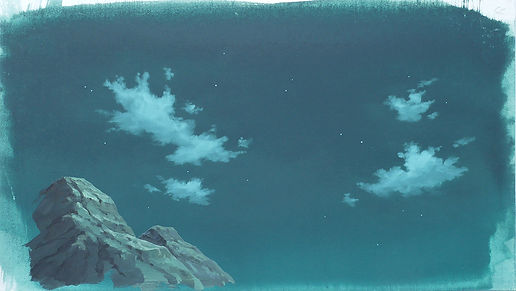Once upon a time, before evil computers seized power, anime were handmade by talented craftsmen and craftswomen inside well-guarded animation studios. Their hands pencilled and painted unique drawings (layouts, gengas, dogas), celluloids (serugas – or cels) and backgrounds which were utilised to make the actual anime episodes or movies.
The images you see watching your favorite anime are these very same celluloids animated and placed over backgrounds. Beyond celluloids and backgrounds, there are other components to making anime which are now treasured by collectors across the globe including scripts, storyboards, settings, drawings and marketing materials.
Learn on this page what anime cels and other production artworks are, how to collect them and how to preserve them from degradation (they are very fragile)!
Contáctenos
01. Scripts (kyakuhon, 脚本)
Anime production starts with a script containing all dialogues as well as contextual indications of what will happen on screen during a given episode or movie.
Scripts, alongside storyboards and settings form the reference materials from which animators will draw and conceive anime.

.jpg)
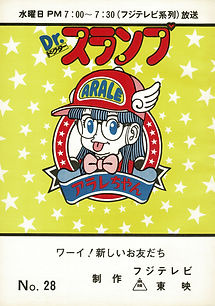.jpeg)
02. Storyboards (ekonte, 絵コンテ)

Storyboards are booklets translating scripts into the visual world and providing animators with useful details which will help them draw and animate the episodes or movies they are working on.
They contain rough drawings drawn on small rectangle boxes on the left-hand side which each summarises a cut (there is a new cut each time the camera changes position).
The columns on the right-hand side contain indications on characters' or items' movements and guidance for camera movements as well as key bits of dialogues.
Travelling effect
When a drawing occupies multiple boxes on a storyboard, that means there will be a travelling effect and the relevant drawings, celluloids and backgrounds will be of panoramic (or pan) size, which collectors treasure due to their rarity.
03. Settings (settei, せってい)
Often presented in booklets distributed to animators, settei are guides providing for series of drawings of key characters, locations or items of an anime depicted from various angles.
They are very important work materials for anime's production processes, ensuring different animators consistently draw the same things, helping to also respect proportions as they have been defined in the settei.
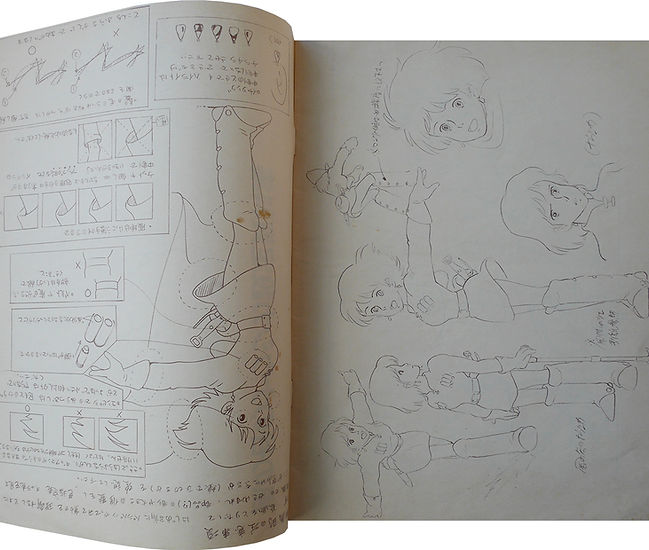%20(3).jpg)
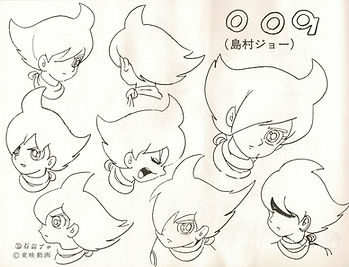.jpg)
04. Layouts (レイアウト)
Layouts are key drawings that summarise a cut, often a larger version of the rough drawings featured in storyboards. They can be more or less refined depending on animators' style but in essence comprise precise indications as to movements of moving parts of a cut, colours and light effects.
Layouts generally feature a rectangle corresponding to the area that viewers will see on screen, with anything outside this area not visible in final production.
Episode number are most often stamped at the top of layouts and cut number written in the top left part of layouts.
Sets of dogas and gengas occasionally come with black and white copies of layouts. These copies were provided as guidance to animators in charge of drawings dogas and gengas.
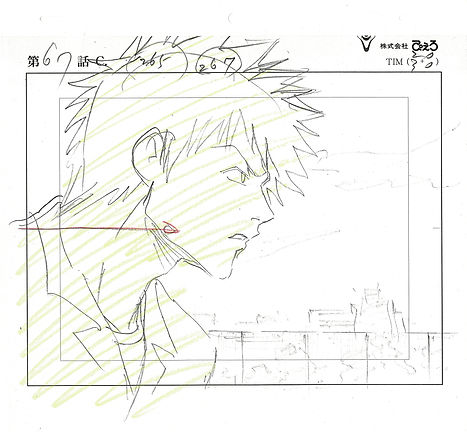%20(2004-2012)%20(1).jpg)
05. Gengas (原げん画) and dogas (動画)
Gengas
Drawn by key animators, gengas represent the key frames of a cut, typically the first (A1) and the last ([Letter][Number]END) but there can be more than two gengas depending on the length and complexity of a cut.
Gengas often feature thick, rough lines and are not yet representative of what frames will exactly look like on screen.
Dogas
Dogas are drawings that go "in between" gengas and detail how, for instance, a character goes from an opening position to a closing position, providing the illusion of movement.
Less rough than gengas, dogas are the closest paper representations of what cuts will look like on TV.
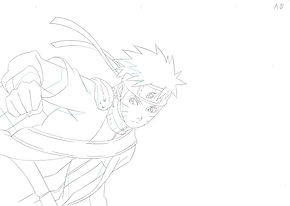
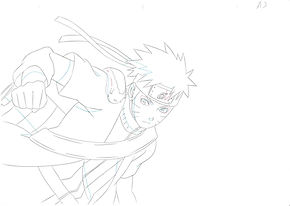
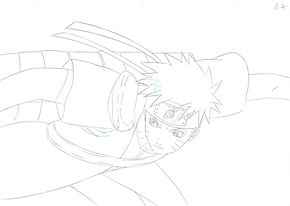
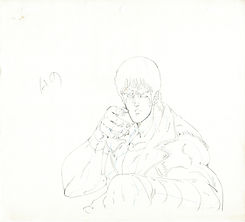
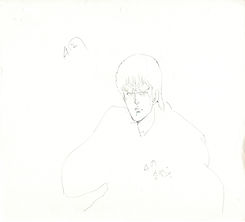
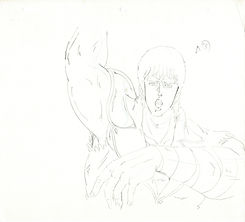
06. Celluloids / cels (seruga, セル画)
Celluloid, cellulo, cel, cello... different names to describe the transparent plastic sheets (cellulose acetate to be precised) with black contour lines printed on the front and characters or background elements painted on the back.
Animated over backgrounds representing for the most part decors such as landscapes or homes, celluloids correspond to actual shots of anime.
One advantage of celluloids is that they can be layered, meaning animators didn't need to redraw entire shots multiple times, instead making up fixed layers combined with moving ones (e.g. a mouth opening and closing, legs moving, etc.).
Celluloids are typically 23 x 26.5 cm for TV anime and 23 x 35 cm for movies and include three oval punched holes at the top so that they could be consistently positioned on animators' desks machines as well as during photography stage.
Pan (or oversized) cel
Large size celluloid (often twice the size of a regular cel) used for horizontal or vertical scrolling effect
Bank cel (BANK セル)
Celluloid utilised multiple times in a series (e.g. a character's attack move) and which is often drawn with particular care
Harmony cel (ハーモニーセル画)
Grail for collectors, harmony cels are used to freeze and emphasize a scene through a layer drawn like a rough sketch with a multitude of lines
Hanken cel
Special cel used for promotional materials like trading cards, magazine or commercials

07. Backgrounds
Background are gouache-painted decors on which celluloids were photographed to make up actual images of anime or movies.
There is only one background for a given cut – it is therefore very rare to own a celluloid together with its matching background.
Backgrounds could be used multiple times in a given episode or across multiple episodes.
